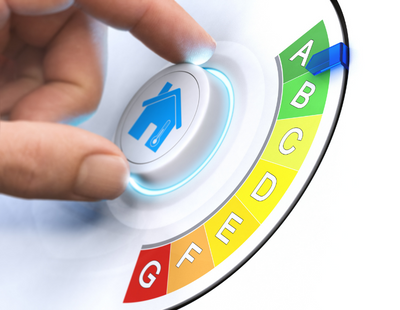Moving from an E to a C banked sellers an extra 8% on average, and moving from a D to a C resulted in an average of 4% extra.
There are also very early signs that better rated homes could sell more quickly than poorly rated ones, Rightmove claims, with EPC B-rated homes selling one day faster than those with a D.Its research found that buyers are becoming more conscious of green features when looking for their next home, with features such as solar panels and heat pumps climbing the rankings in Rightmove’s keyword sort tool.
Searches for solar panels have risen from position 500 in November 2020 to position 98 in June 2022, and heat pumps have risen from 1,000 to 190.
Plus, there are now 73% more green terms such as ‘sustainable’ and ‘low carbon’ being used by agents as selling points in their property descriptions on Rightmove compared with the start of 2020.
Tim Bannister, director of property science for Rightmove, suggests that buyers may even start negotiating discounts with agents based on the energy efficiency improvements required on a property.
He said: “Improving a property’s green credentials is critically important as the UK strives to hit net zero.
“The immediate challenge is the sheer number of properties that are currently below an EPC rating of C and the costs involved to fix this.
“There has been much debate about what could happen in the future to homes with poor energy efficiency, and the government has said they will make sure these homes can still get mortgages.
“But I don’t think it would be a surprise if in 10 years’ time we see that people taking out mortgages or remortgaging a home with the lowest EPC ratings find that they miss out on the best mortgage rates.
“We’ll also start to see buyers become much more aware of the green improvements that are needed, and factor this in when they consider how much to offer a seller. It’s likely to be a gradual rather than a swift change, but we can already see the green price premium when improvements are made.
“Of course, improvements that make a home more energy efficient often also means the condition improves, such as installing new windows. But the end result of making improvements is not just a refurbished home worth more money, it’s often also a greener home.”
Bannister added that more help is required for homeowners, particularly landlords, to make their properties green.
He said: “It’s clear that many home-owners want to make improvements, but the complexity and costs of the changes means that people need more help and financial assistance to know which changes to make and when.
“We know saving on energy bills is the biggest motivator to make changes, and in future we’ll need to consider costs for cooling our homes as much as heating them, as we found during the recent heatwave. This opens up more questions about the best systems that people should be installing to futureproof their homes.
“If the government brings in legislation for landlords to improve their properties, and if the sums don’t add up to make the improvements, then some will sell up.
“This is especially likely among those with smaller portfolios and those who would need to make significant changes to cheaper homes. If a number do sell up then it could exacerbate what is already a severely stock-constrained rental market, increasing rents for available homes in the short-term, before the benefits of greener properties filter through.”
Commenting on the research, Kate Eales, head of regional estate agency for Strutt & Parker, said sustainability credentials are rising up the consideration list, but added that the experience of finding a home is still an emotional one.
She said: “If buying a home was purely a financial decision, a house with a strong EPC would be top of the list.
“But a purchase of a period home is often driven by the heart, and not just the head. EPCs create more transparency so buyers know what’s what when they become the custodian of an older home.
“We’re beginning to see increasing numbers of sustainable new homes and schemes built in a period style. These sustainable character homes have seen growing popularity in recent months – perhaps signalling a confluence of the nation’s adoration of quintessential looking houses with the rise in cost of living and greater eco-consciousness.”
















.png)


.png)




Join the conversation
Be the first to comment (please use the comment box below)
Please login to comment